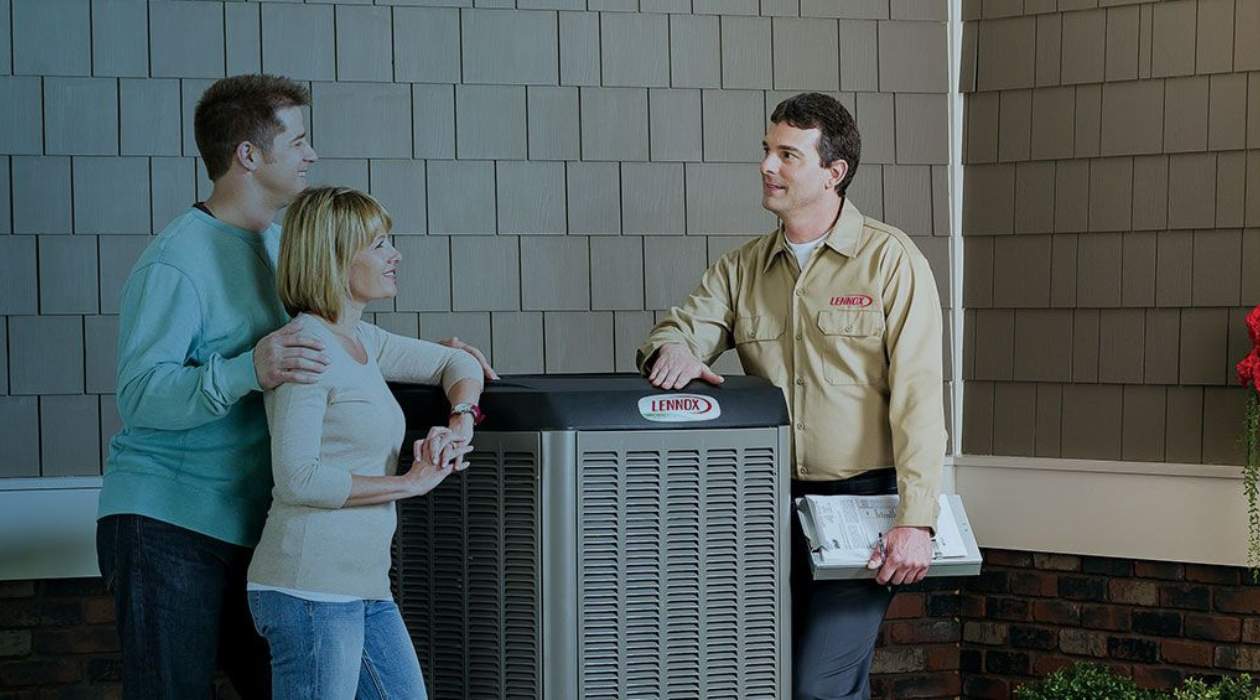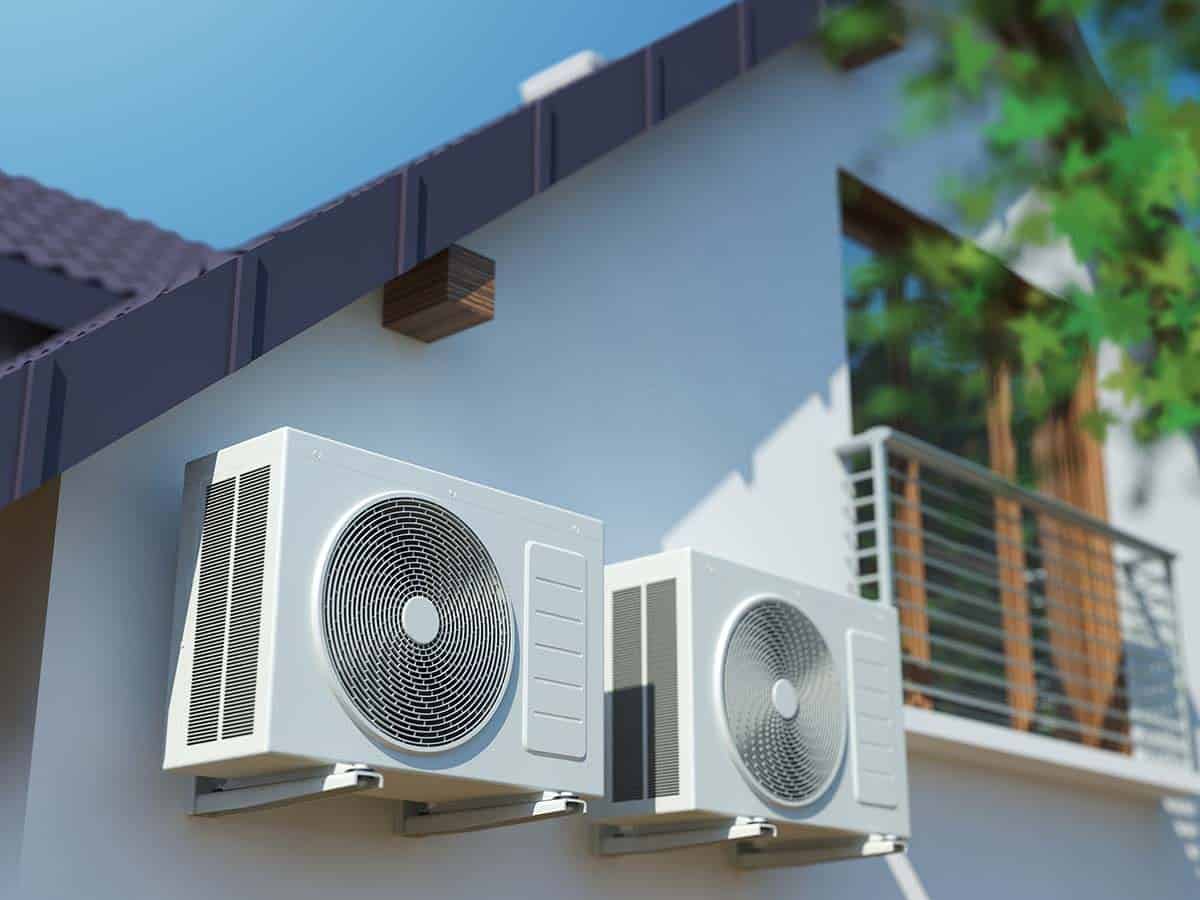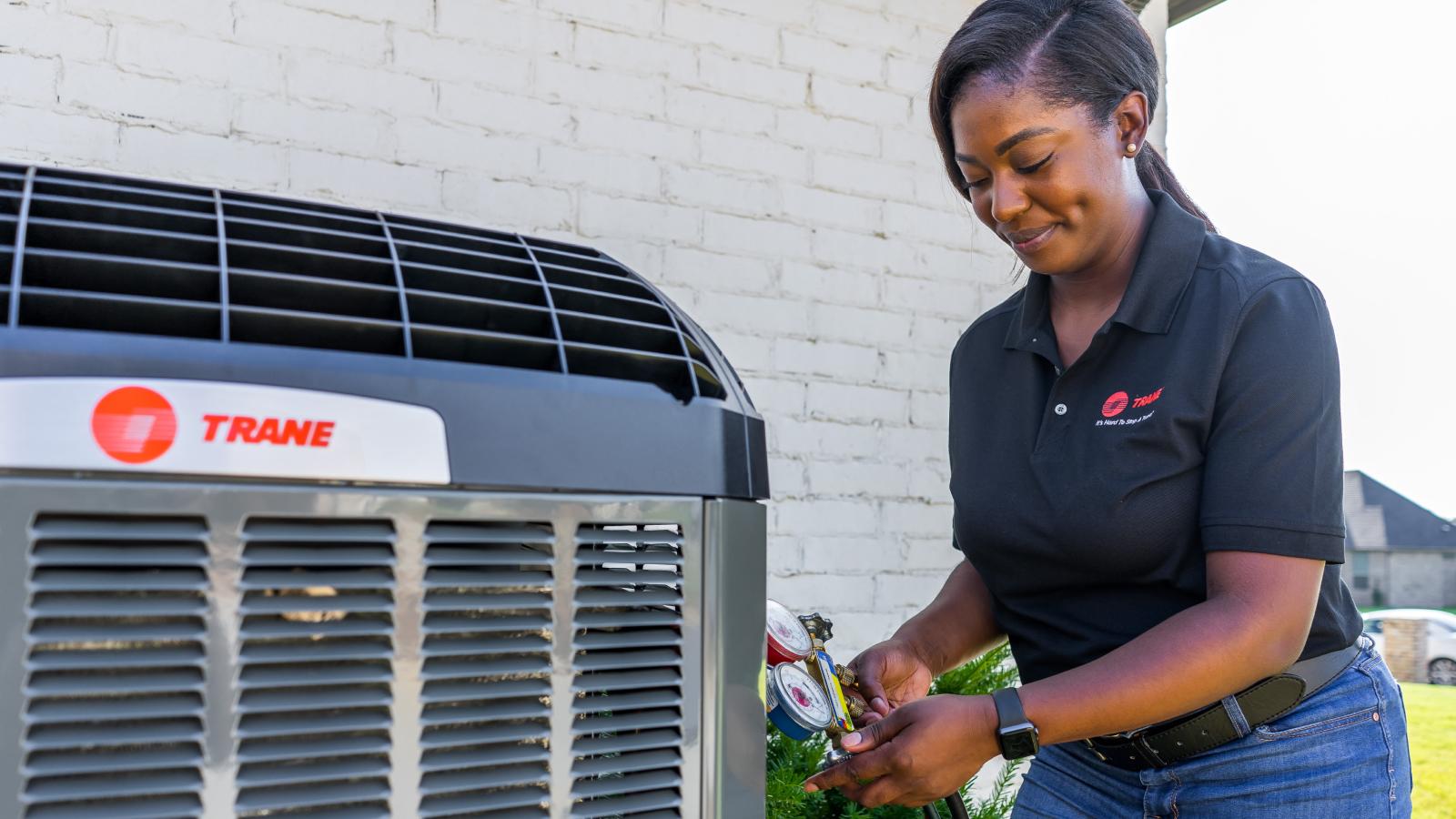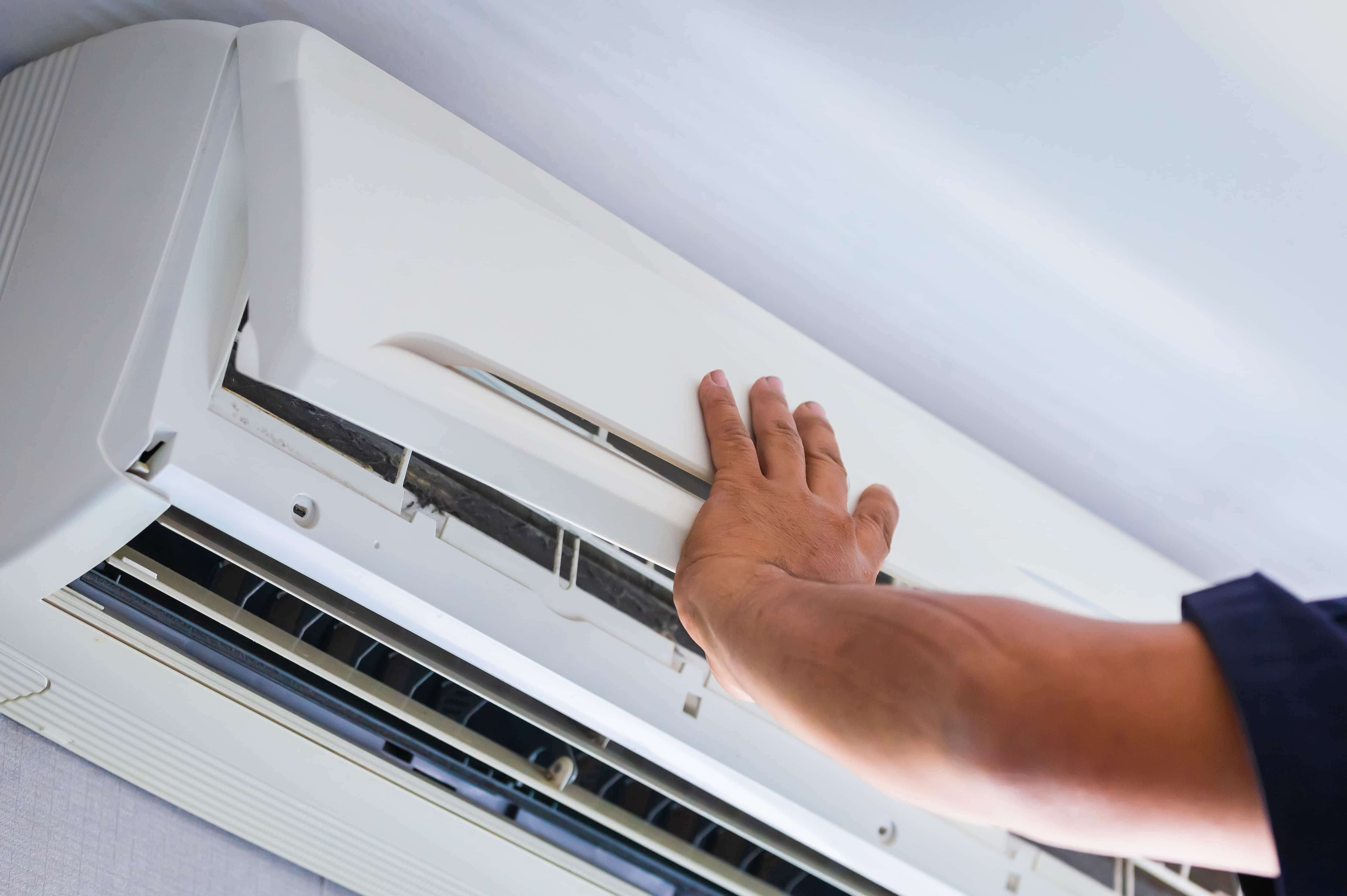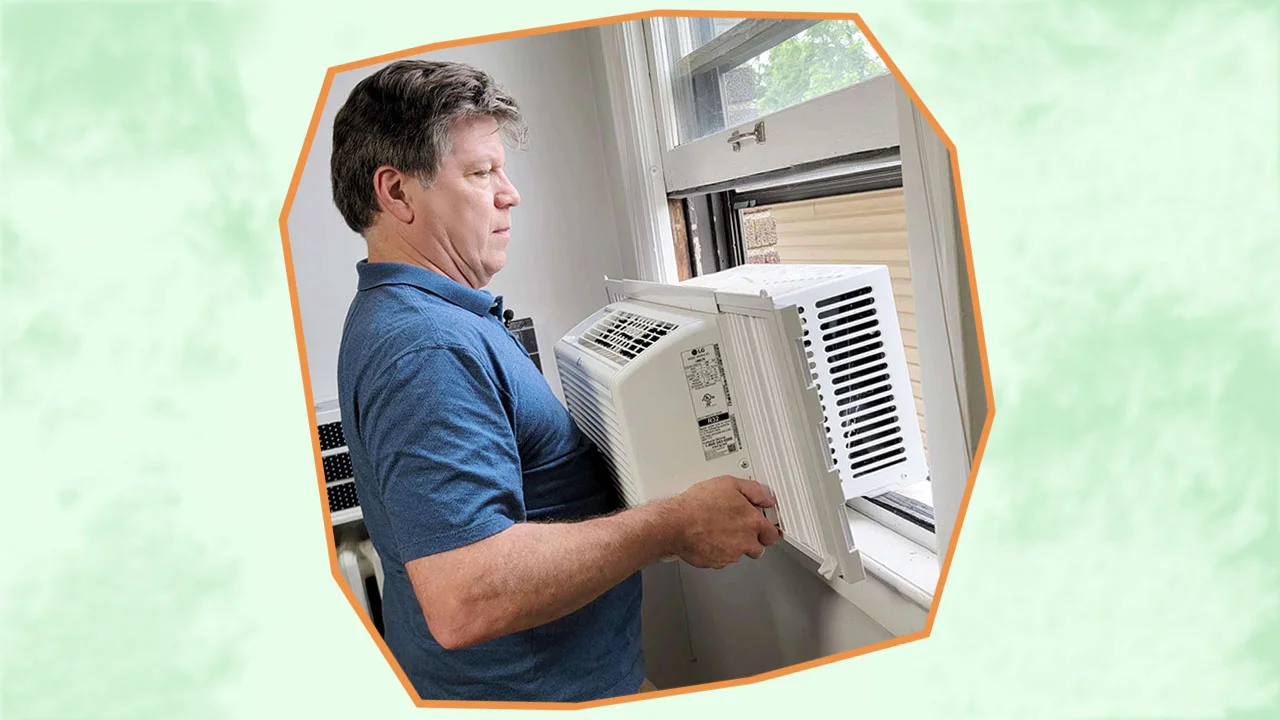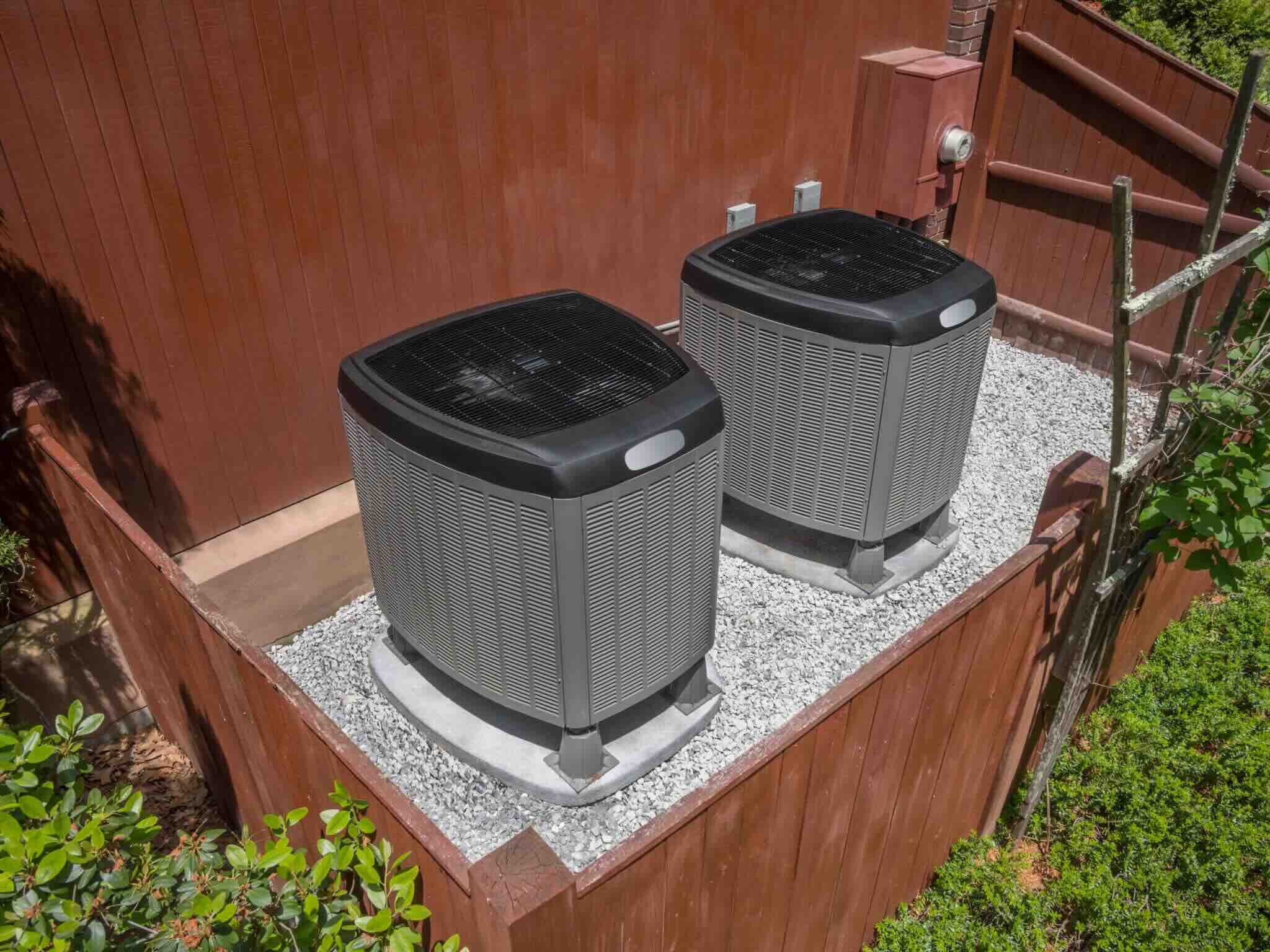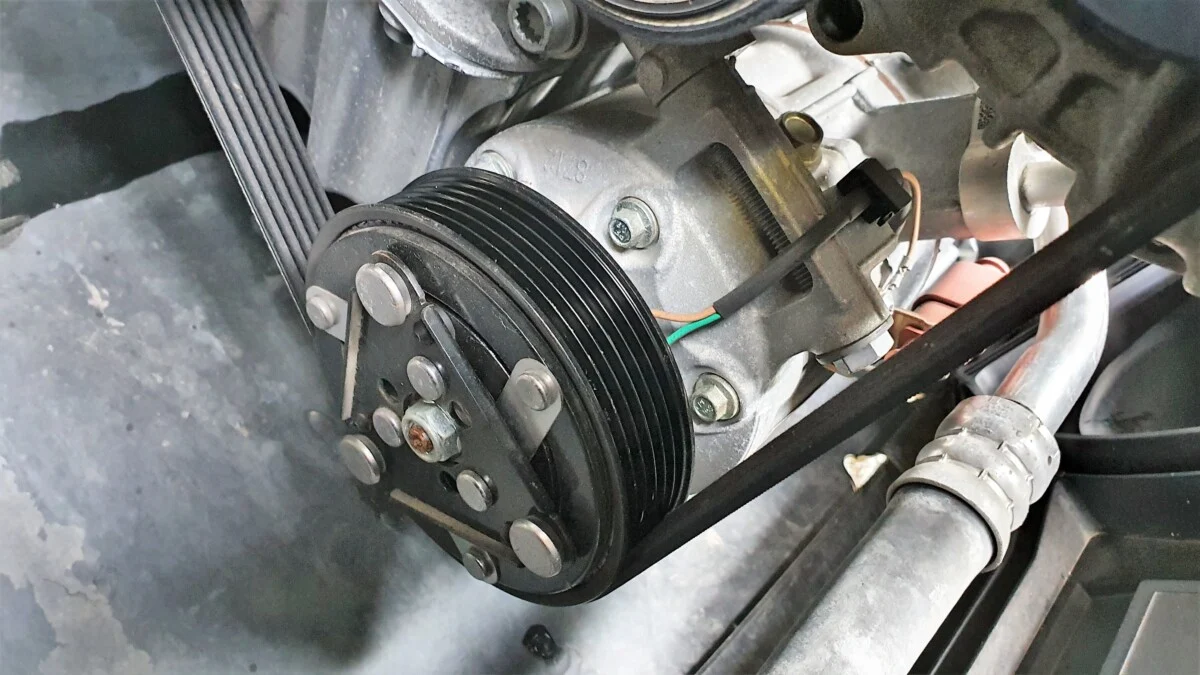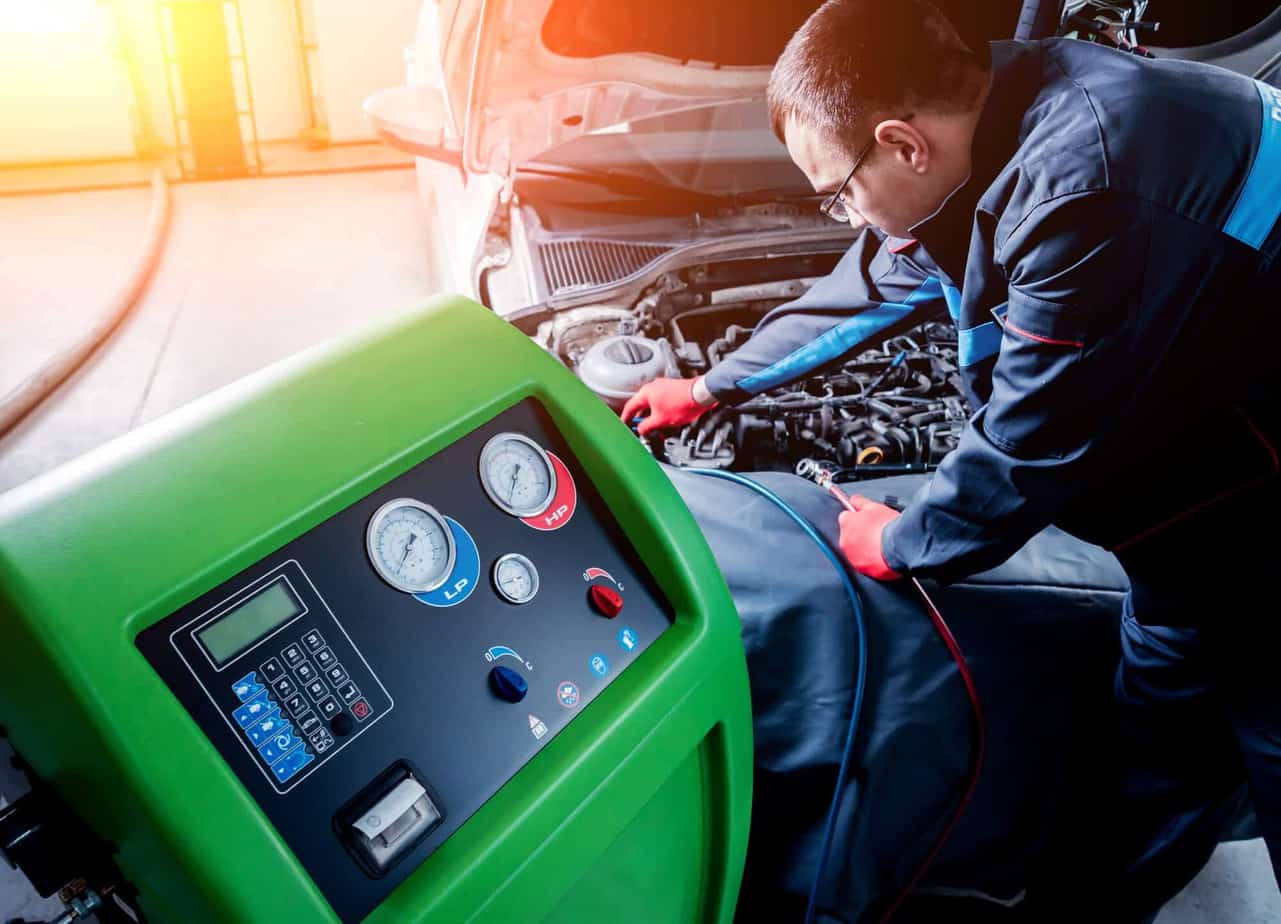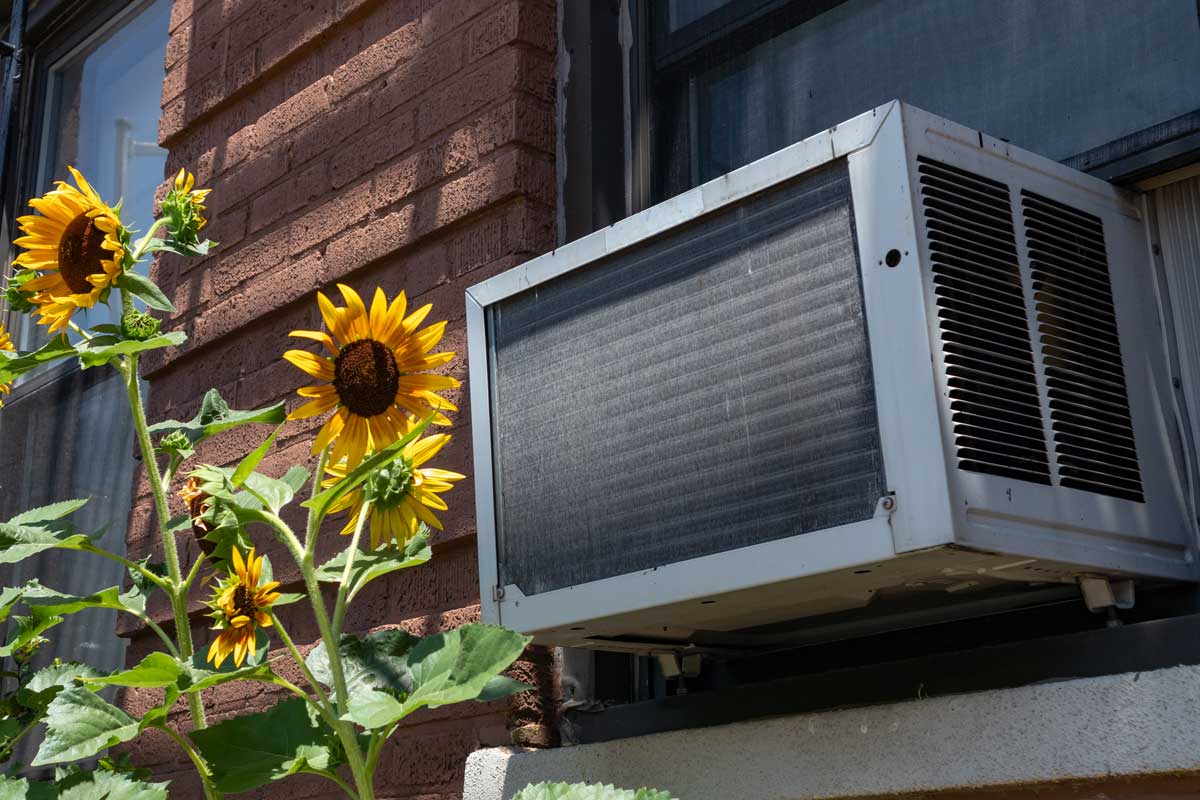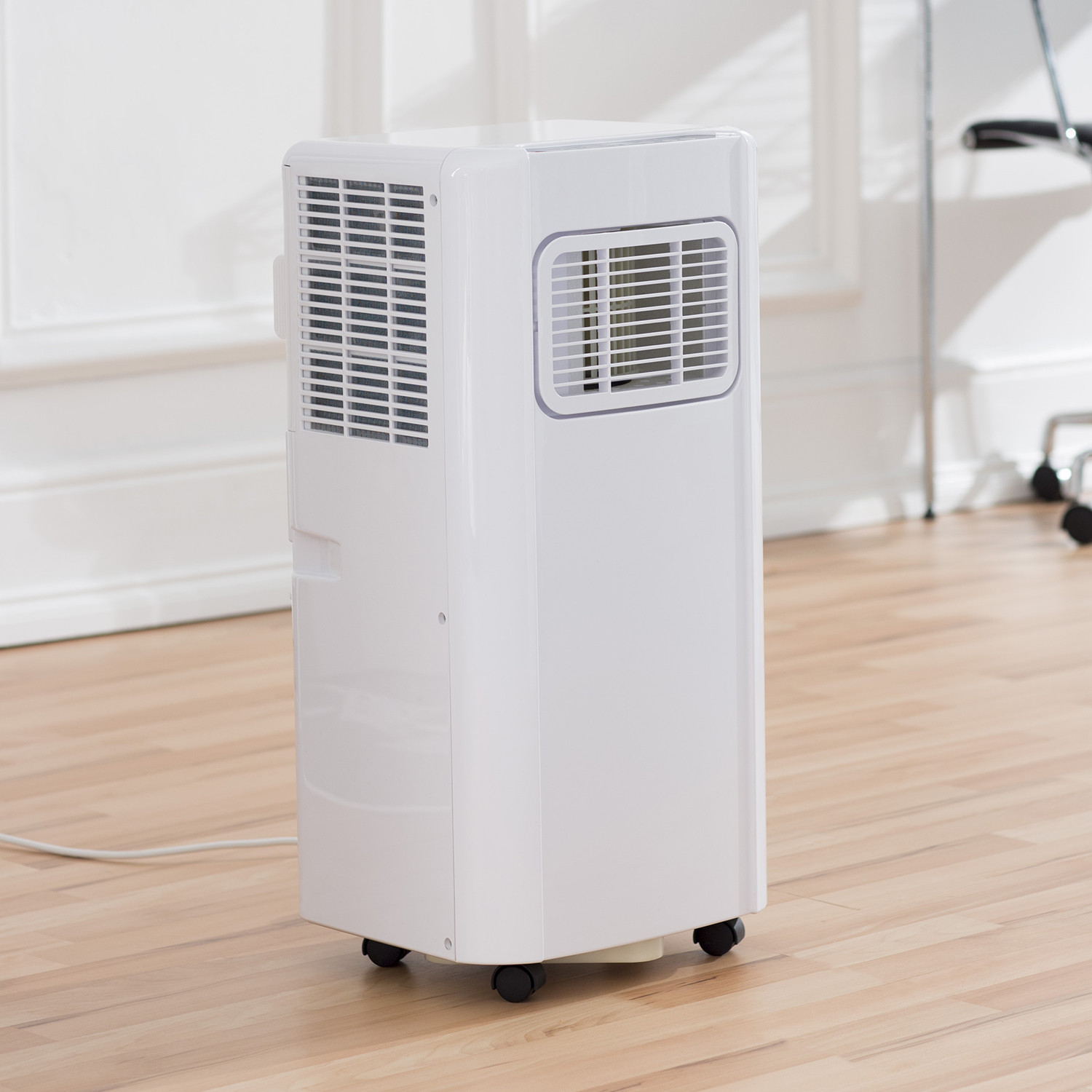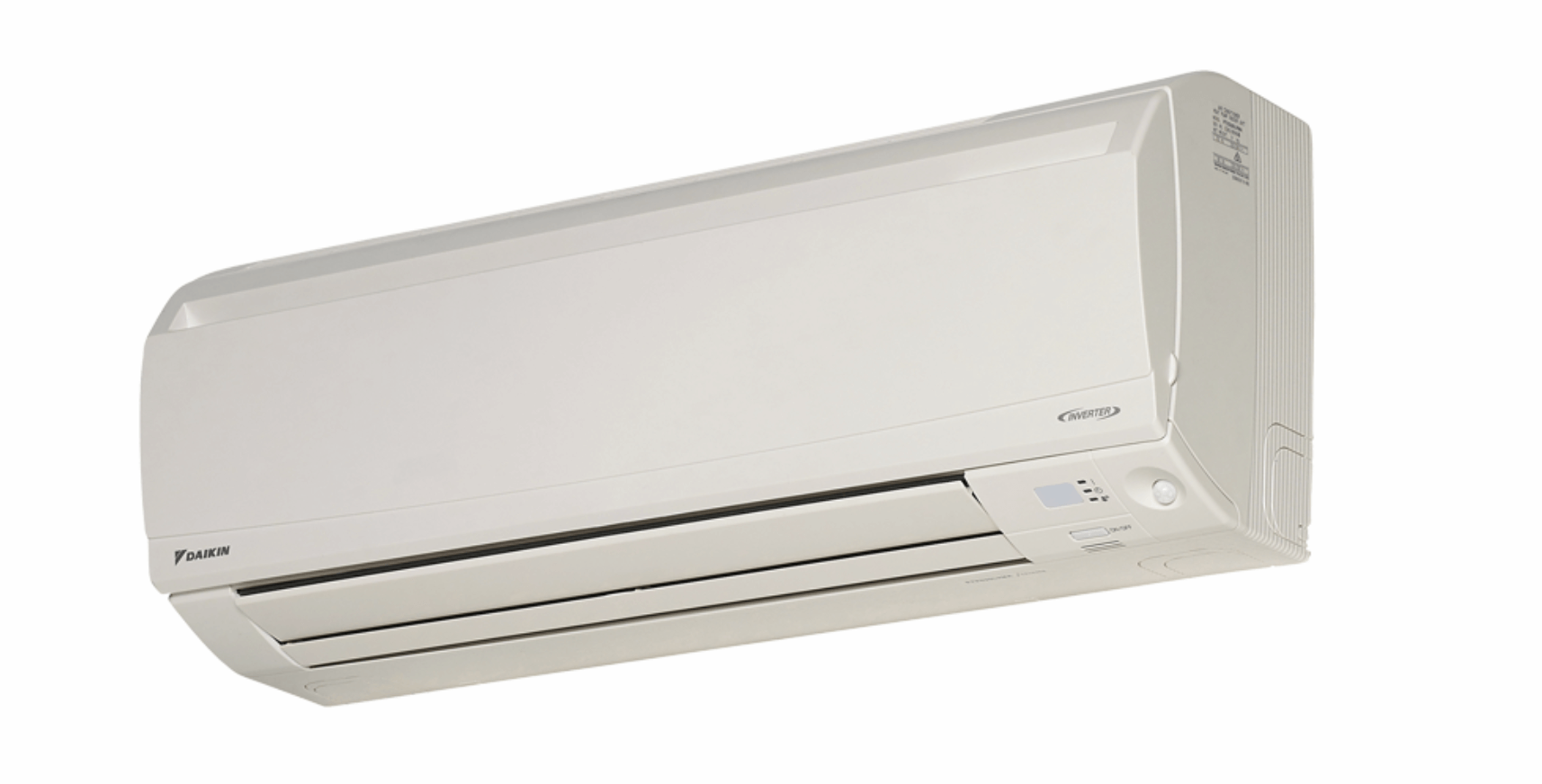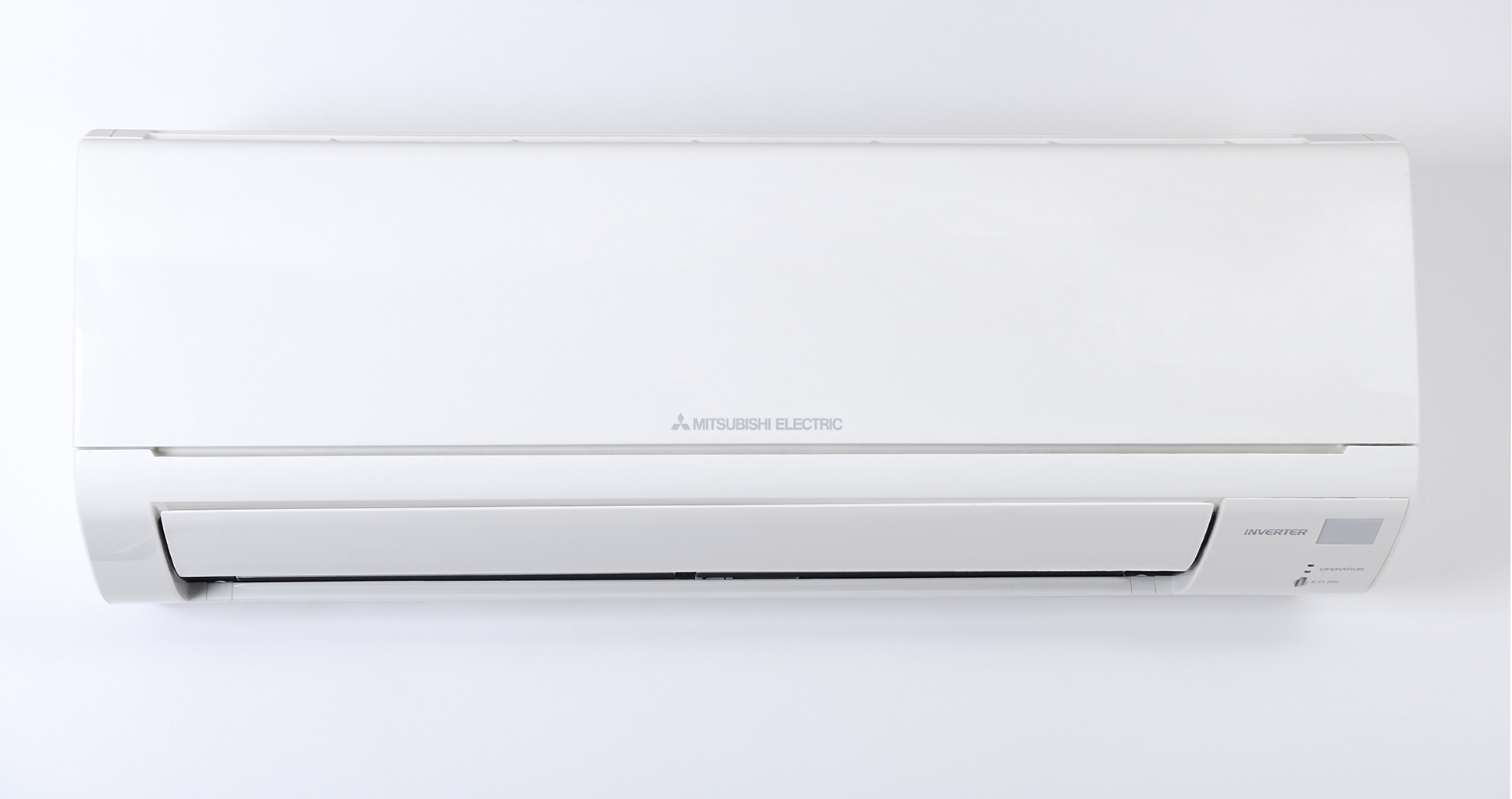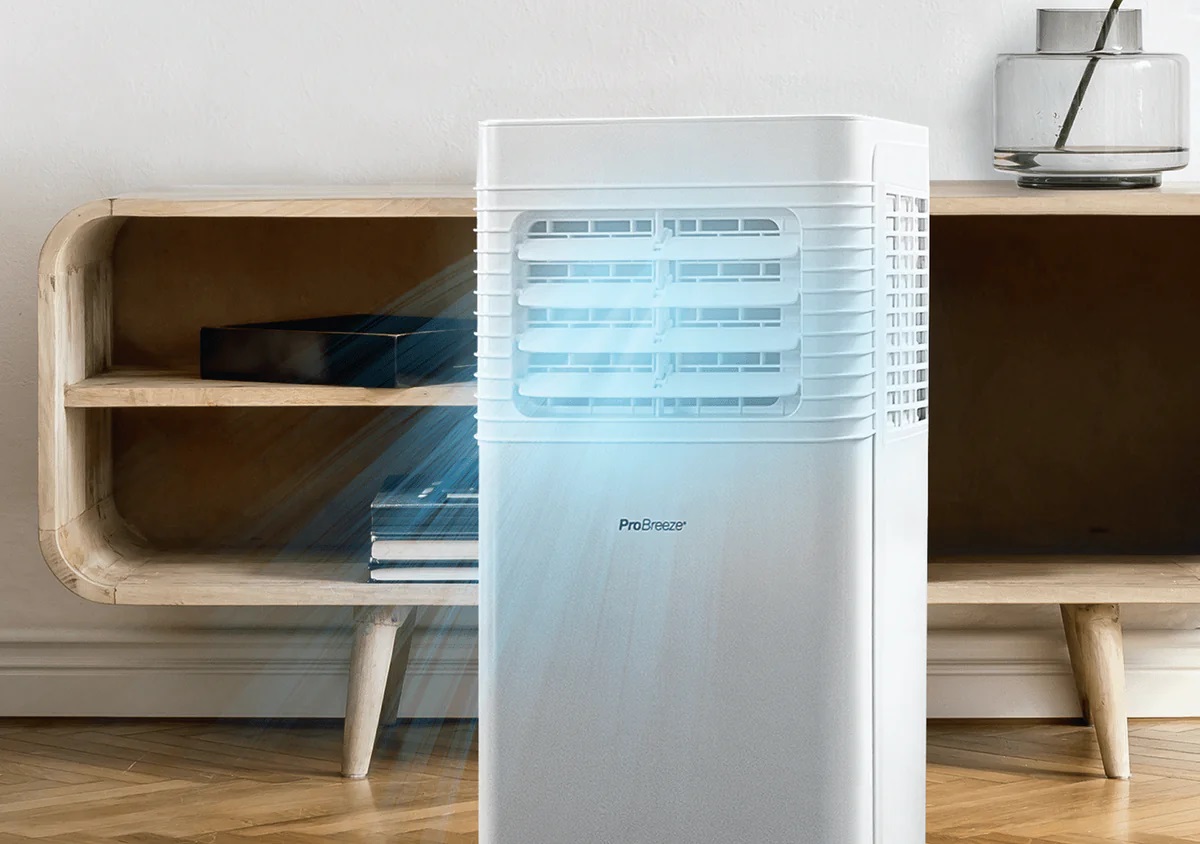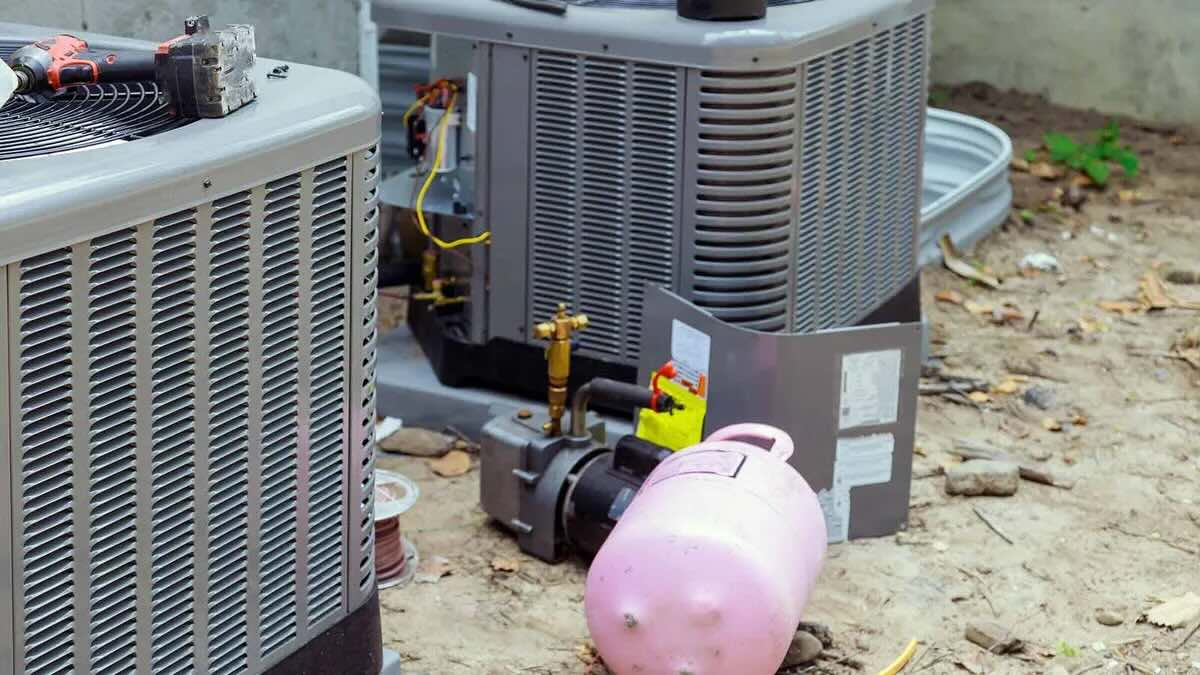Home>Home Maintenance>How Much Humidity Does An Air Conditioner Remove
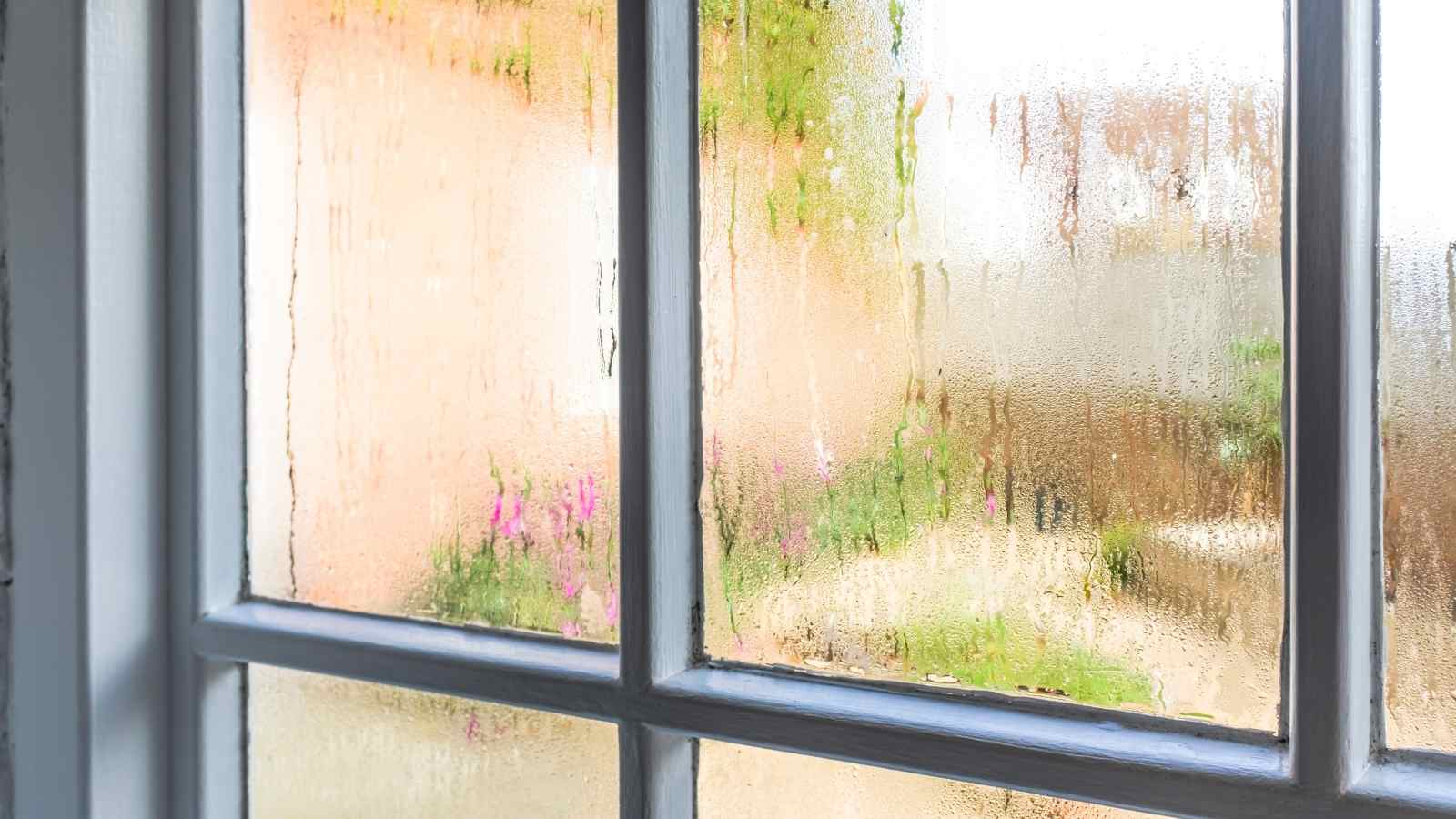

Home Maintenance
How Much Humidity Does An Air Conditioner Remove
Modified: October 20, 2024
Discover how an air conditioner can effectively remove humidity from your home. Learn more about home maintenance and the importance of controlling indoor moisture levels.
(Many of the links in this article redirect to a specific reviewed product. Your purchase of these products through affiliate links helps to generate commission for Storables.com, at no extra cost. Learn more)
Introduction
Welcome to our comprehensive guide on how much humidity an air conditioner can remove. If you’ve ever experienced hot, sticky weather, you know how uncomfortable high humidity levels can be. Luckily, air conditioners not only cool the air but also play a crucial role in removing excess humidity from indoor spaces.
Understanding how air conditioners remove humidity is essential for maintaining a comfortable living environment and preventing issues such as mold growth and musty odors. In this article, we will explore the relationship between humidity and air conditioning and provide you with practical tips on controlling humidity levels in your home or office.
So, if you’re ready to learn more about the importance of humidity control and how your air conditioner can help, let’s dive in!
Key Takeaways:
- Air conditioners not only cool the air but also remove excess humidity, creating a more comfortable and healthier indoor environment by condensing moisture and preventing issues like mold growth and musty odors.
- Factors like air conditioner size, temperature, ventilation, and maintenance impact the amount of humidity removed, so optimizing these factors can maximize your air conditioner’s dehumidification capabilities for a more comfortable living space.
Read more: How Much Does A Carrier Air Conditioner Cost
Understanding Humidity and Air Conditioning
Before we delve into the specifics of how air conditioners remove humidity, let’s first understand what humidity is and its impact on our comfort.
Humidity refers to the amount of moisture present in the air. It is commonly measured in terms of relative humidity (RH) as a percentage. For example, a relative humidity of 50% means that the air is holding half of the maximum amount of moisture it can hold at a specific temperature.
When humidity levels are high, the air feels moist and sticky, making it harder for our bodies to regulate temperature through perspiration. On the other hand, low humidity can cause dryness and discomfort, leading to issues such as dry skin, respiratory irritation, and even static electricity.
Now, you might wonder how air conditioning plays a role in controlling humidity levels. Air conditioners not only cool the air by removing heat, but they also dehumidify it by condensing the moisture in the air.
During the cooling process, air conditioners pass the warm air over a set of cold coils called the evaporator. As the warm air comes into contact with the cold coils, the moisture in the air condenses into water droplets. These collect in a drainage pan and are then drained outside through a pipe or evaporated using a drain pump.
By removing moisture from the air, air conditioners create a more comfortable and healthier indoor environment. However, it is important to note that not all air conditioners are equally effective at dehumidification, and several factors can influence the amount of humidity they can remove.
In the next section, we will explore these factors and provide you with insights on how to optimize your air conditioner’s dehumidification capabilities.
The Role of Humidity in Indoor Comfort
Humidity plays a crucial role in our overall indoor comfort. It affects our perception of temperature, our ability to cool down through perspiration, and even the quality of the air we breathe.
When humidity levels are too high, our bodies find it difficult to cool down through evaporation because the air is already saturated with moisture. This can leave us feeling hot, sticky, and uncomfortable, even in areas with relatively moderate temperatures.
On the other hand, low humidity levels can cause issues as well. Dry air can lead to dry skin, chapped lips, and respiratory problems. It can also exacerbate symptoms for those with allergies or asthma.
By maintaining an optimal humidity level in indoor spaces, we can enhance our comfort and overall well-being. The American Society of Heating, Refrigerating, and Air-Conditioning Engineers (ASHRAE) recommends keeping the relative humidity between 30% and 60% for most indoor environments.
Additionally, controlling humidity is important for preventing the growth of mold, mildew, and bacteria. These thrive in damp environments and can lead to musty odors, allergic reactions, and even structural damage to the building.
Now that we understand the importance of humidity control, let’s explore how air conditioners play a vital role in removing excess moisture from the air.
How Air Conditioners Remove Humidity
Air conditioners are designed not only to cool the air but also to remove excess humidity, creating a more comfortable and healthier indoor environment. The process by which air conditioners remove humidity is known as dehumidification.
Dehumidification occurs as air passes through the air conditioner’s cooling system. The air is first drawn into the unit and passes over a set of cold coils known as the evaporator. The evaporator coils are responsible for cooling the air down.
As the warm air comes into contact with the cold evaporator coils, the temperature of the air drops. This decrease in temperature causes the moisture in the air to condense into water droplets. These droplets collect on the coils and eventually drip into a drainage pan.
Once the moisture has been removed from the air, the cooled and dehumidified air is then blown back into the room, providing a cooler and more comfortable atmosphere.
It is important to note that during this process, air conditioners not only remove moisture but also extract heat from the air. This is why you may notice warm air exhausting from the outdoor unit of your air conditioner.
While air conditioners are effective at removing moisture from the air, the amount of humidity they can remove depends on several factors.
Air Conditioner Size: The size and capacity of the air conditioner play a significant role in its ability to dehumidify. An undersized unit may struggle to sufficiently cool and dehumidify a space, while an oversized unit may cycle on and off quickly, not allowing enough time for proper dehumidification.
Ambient Temperature: The temperature of the air affects the rate at which water vapor condenses. Warmer air can hold more moisture, so air conditioners tend to dehumidify more effectively in hotter climates or during summer months.
Ventilation and Airflow: Adequate airflow and ventilation help distribute the dehumidified air evenly. Proper ventilation also helps to remove moisture generated from everyday activities such as cooking and showering.
Insulation: Well-insulated spaces prevent outside humidity from entering and reduce the load on the air conditioner.
Operating Conditions: Running the air conditioner at lower temperatures and in continuous fan mode can provide improved dehumidification, albeit at the expense of energy efficiency.
Understanding these factors can help you optimize your air conditioner’s dehumidification capabilities, ensuring a more comfortable living environment.
Factors Affecting the Amount of Humidity Removed
The amount of humidity that an air conditioner can remove from the air depends on various factors. Understanding these factors can help you optimize the dehumidification process and maintain a comfortable indoor environment. Here are the key factors that affect the amount of humidity removed by an air conditioner:
Air Conditioner Capacity: The capacity or size of the air conditioner is an important factor. A properly sized unit for the space it is cooling will be more effective at removing humidity. Undersized units may struggle to dehumidify adequately, while oversized units may not cycle on long enough to remove moisture effectively.
Ambient Temperature and Relative Humidity: The ambient temperature and the current relative humidity play significant roles in the dehumidification process. Higher temperatures and humidity levels allow the air conditioner to remove more moisture. In areas with high humidity, it might be beneficial to use a dehumidifier in addition to the air conditioner for improved humidity control.
Ventilation and Airflow: Proper airflow and ventilation are crucial for efficient dehumidification. Ensure that the air conditioner’s vents are unobstructed and that the air can circulate freely throughout the room. Good airflow helps in distributing the dehumidified air evenly and removing moisture efficiently.
Insulation and Air Sealing: Proper insulation and air sealing are important for preventing the infiltration of outdoor humid air. Well-insulated spaces can help maintain lower humidity levels by minimizing the exchange of air between the indoor and outdoor environments.
Operating Conditions: The operating conditions of the air conditioner also affect humidity removal. Running the air conditioner at lower temperatures and in continuous fan mode can enhance dehumidification but may negatively impact energy efficiency. It’s important to strike a balance between comfort, humidity control, and energy consumption.
Maintenance and Filter Cleanliness: Regular maintenance of the air conditioner, including cleaning or replacing the air filters, is crucial for optimal performance. Clogged filters hinder airflow and reduce the air conditioner’s ability to remove humidity effectively. Keep the filters clean and conduct routine maintenance to ensure efficient dehumidification.
By considering these factors and making necessary adjustments, you can maximize the amount of humidity removed by your air conditioner, creating a more comfortable and healthier indoor environment.
Air conditioners remove humidity by passing warm air over cold coils, causing the moisture in the air to condense into water droplets. This water is then drained away, reducing the overall humidity in the air.
Ideal Humidity Levels for Indoor Spaces
Maintaining the proper humidity level in indoor spaces is crucial for our comfort, health, and overall well-being. The American Society of Heating, Refrigerating, and Air-Conditioning Engineers (ASHRAE) recommends keeping the relative humidity between 30% and 60% for most indoor environments.
Humidity levels below 30% can lead to dryness, resulting in dry skin, irritated eyes, and respiratory discomfort. It can also exacerbate respiratory conditions, such as asthma and allergies. Additionally, low humidity can cause static electricity, which can be particularly bothersome during the winter months.
On the other hand, humidity levels above 60% can create a breeding ground for mold, mildew, and dust mites. Excessive moisture in the air can also lead to musty odors, increased allergens, and potentially damage to furniture, electronics, and structural components of the building.
While these are general guidelines, it’s important to note that personal preferences can vary. Some individuals may feel more comfortable with slightly higher or lower humidity levels. Additionally, specific situations may require different humidity levels. For example, certain musical instruments or artwork may require specific humidity conditions for preservation.
It’s a good practice to monitor humidity levels regularly, especially in areas prone to high or low humidity. You can use a hygrometer, a device that measures humidity, to keep track of the humidity levels in your indoor spaces. Hygrometers are widely available and can be found as standalone devices or as part of a thermostat or smart home system.
If you find that the humidity levels in your indoor spaces consistently fall outside the recommended range, there are measures you can take to address the issue. In the next section, we will discuss some tips to control humidity levels using your air conditioner.
Tips for Controlling Humidity Levels with an Air Conditioner
Your air conditioner can play a significant role in controlling humidity levels in your indoor spaces. Here are some practical tips to optimize your air conditioner’s dehumidification capabilities:
- Set the Right Temperature: Set your air conditioner to a temperature that maintains a comfortable indoor environment while promoting dehumidification. The ideal temperature range is typically between 68°F (20°C) and 72°F (22°C). A lower temperature can help reduce humidity levels, but make sure not to set it too low to avoid excessive energy consumption.
- Utilize the “Dry” or “Dehumidify” Mode: Many air conditioners have a designated “dry” or “dehumidify” mode. This mode prioritizes dehumidification over cooling, which can be especially useful during periods of high humidity. Engaging this mode allows the air conditioner to optimize its settings for humidity control.
- Keep Doors and Windows Closed: To prevent the influx of humid outdoor air, make sure all doors and windows are properly sealed and closed when the air conditioner is operating. This helps maintain a controlled indoor environment and prevents additional moisture from entering your space.
- Maintain Proper Airflow: Ensure that the vents and registers in your home are unobstructed. Furniture, curtains, and other objects should not block the airflow. Proper airflow allows the air conditioner to distribute the dehumidified air more effectively and maintain consistent humidity levels.
- Regularly Clean or Replace Air Filters: Clogged or dirty air filters can hinder airflow and reduce the efficiency of your air conditioner. Clean or replace the filters regularly to ensure optimal performance. This helps the air conditioner to remove moisture more efficiently and maintain desired humidity levels.
- Consider Using a Programmable Thermostat: A programmable thermostat allows you to set specific humidity levels and temperature settings for different times of the day. This helps maintain consistent comfort and humidity control, even when you’re away from home.
- Use Additional Dehumidifiers: If you live in an extremely humid climate or have specific areas in your home that are prone to excess moisture, consider using additional dehumidifiers. These devices can work in conjunction with your air conditioner to enhance dehumidification in targeted spaces.
Remember, it’s important to strike a balance between temperature, humidity, and energy efficiency. Experiment with these tips and monitor the humidity levels in your indoor spaces to find the settings that work best for your comfort and overall well-being.
Maintaining and Monitoring Humidity Levels
Maintaining and monitoring humidity levels in your indoor spaces is essential for creating a comfortable and healthy environment. Here are some tips to help you effectively maintain and monitor humidity levels:
- Use a Hygrometer: Invest in a hygrometer, a device that measures humidity levels. Place it in different rooms to get an accurate understanding of the humidity levels throughout your home. Hygrometers can help you determine if your air conditioner is effectively dehumidifying the air.
- Regularly Check and Adjust Settings: Monitor the humidity levels on your hygrometer regularly and make adjustments to your air conditioner settings as needed. If the humidity levels are consistently too high or too low, you may need to modify the temperature or activate the dehumidification mode on your air conditioner.
- Inspect for Leaks and Moisture Sources: Regularly inspect your home for any leaks or sources of excess moisture that may be contributing to high humidity levels. Fixing leaks, addressing plumbing issues, and properly ventilating areas prone to moisture can help maintain optimal humidity levels.
- Maintain Proper Airflow: Ensure that air vents and registers are not obstructed by furniture or other objects. Good airflow allows the dehumidified air to circulate efficiently, reducing the chances of excess humidity in certain areas.
- Keep Indoor Plants in Check: While indoor plants offer many benefits, they can also contribute to higher humidity levels. Limit the number of plants or choose plant species that have lower moisture requirements to help maintain humidity at desirable levels.
- Perform Regular Air Conditioner Maintenance: Regular maintenance of your air conditioner is crucial to ensure its optimal performance in dehumidifying the air. Clean or replace air filters as recommended by the manufacturer, and schedule professional air conditioner maintenance to keep the system in top condition.
- Consider Additional Moisture-Control Measures: In some cases, especially in areas with consistently high humidity, you may need to employ additional moisture-control measures. This could include using dehumidifiers in specific rooms or investing in whole-house dehumidification systems to supplement your air conditioner’s dehumidification capabilities.
By maintaining and monitoring humidity levels, you can ensure a comfortable and healthy indoor environment. Regular checks, adjustments, and preventive measures will help you effectively manage humidity in your home or office, enhancing your overall well-being.
Conclusion
Controlling humidity levels in your indoor spaces is crucial for maintaining a comfortable and healthy living environment. Air conditioners play a vital role in not only cooling the air but also removing excess humidity. Understanding how air conditioners remove humidity and the factors that impact their dehumidification capabilities can help you optimize their performance.
By setting the right temperature, utilizing the “dry” or “dehumidify” mode, maintaining proper airflow, and regularly cleaning or replacing air filters, you can enhance your air conditioner’s ability to remove moisture from the air. Additionally, keeping doors and windows closed, insulating your space, and considering a programmable thermostat can contribute to effective humidity control.
Monitoring humidity levels with a hygrometer and making necessary adjustments to your air conditioner’s settings will help you maintain the recommended humidity range of 30% to 60% for most indoor environments. Regular maintenance of your air conditioner, along with addressing any leaks or sources of excess moisture, is also essential for optimal humidity control.
Remember that personal preferences and specific circumstances can influence the ideal humidity levels for you. By maintaining a balance between temperature, humidity, and energy efficiency, you can create a comfortable and healthy living environment while minimizing the risk of mold, mildew, and other moisture-related issues.
By following the tips and guidelines outlined in this article, you can effectively control humidity levels with your air conditioner and enjoy a more pleasant living space. So, take the necessary steps to maintain optimal humidity and make your indoor environment a truly comfortable oasis.
Frequently Asked Questions about How Much Humidity Does An Air Conditioner Remove
Was this page helpful?
At Storables.com, we guarantee accurate and reliable information. Our content, validated by Expert Board Contributors, is crafted following stringent Editorial Policies. We're committed to providing you with well-researched, expert-backed insights for all your informational needs.
